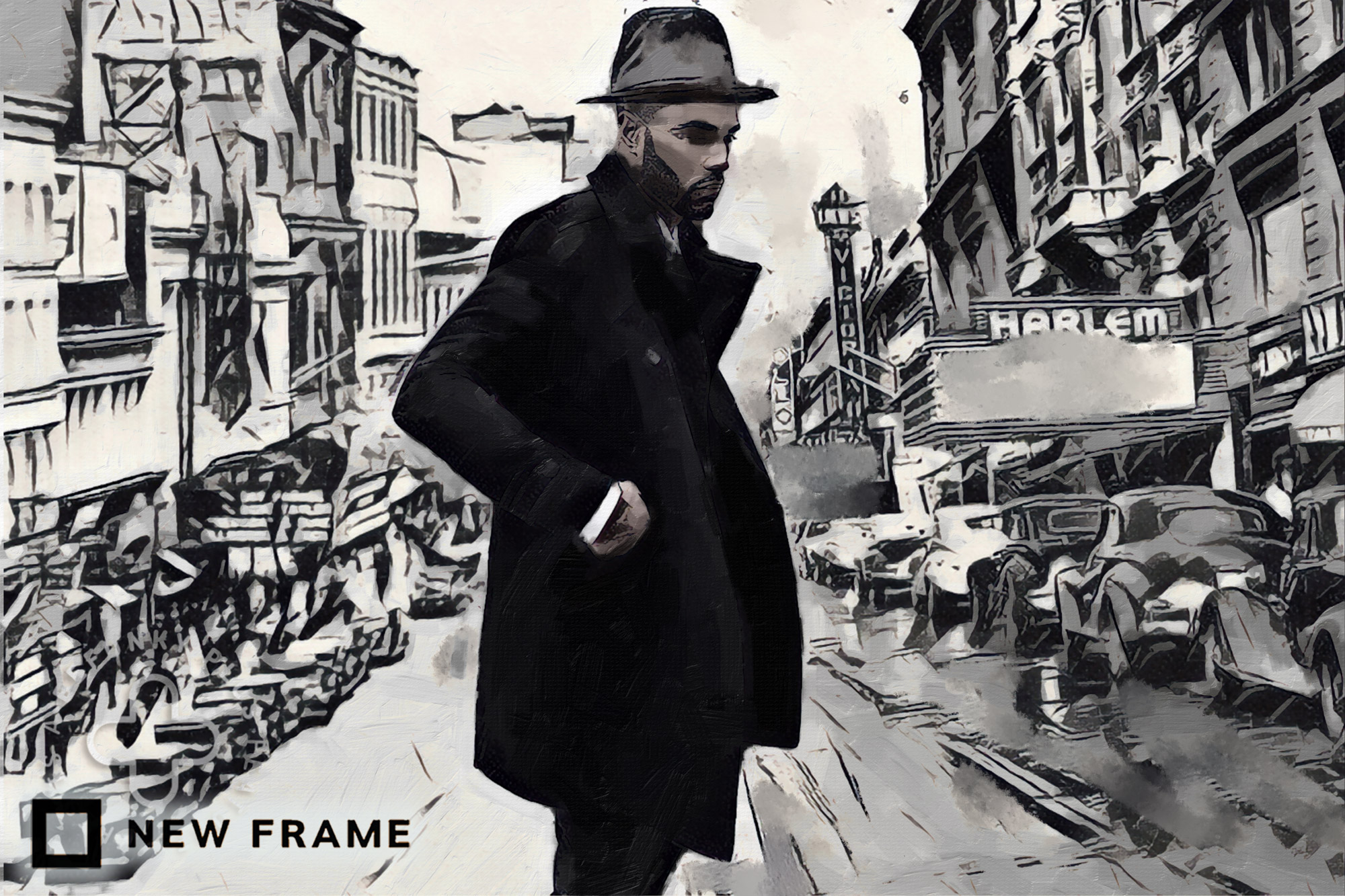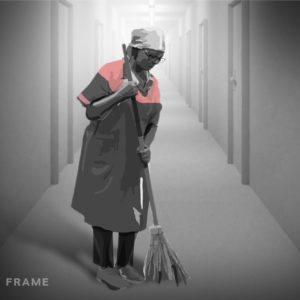Sharp Read | A ‘light’ caper with profound purpose
While it has the tense excitement of a crime novel, the considerable class, political and social undercurrents in Colson Whitehead’s Harlem Shuffle make it so much more.
Author:
3 May 2022

George Floyd was neither the first nor the last. The July 1964 riot in Harlem, the background to Colson Whitehead’s most recent book, Harlem Shuffle (Fleet), was triggered by the police murder of African American James Powell, 15. He was shot in cold blood in front of a dozen witnesses by Lieutenant Thomas Gilligan, who was later exonerated by his bosses.
Six nights of riots followed. Later that year, activists drained their cars of fuel to block New York’s streets in a massive “stall-in” to impede president Dwight Eisenhower’s cavalcade to open the World’s Fair. The morally tarnished American state, they said, had no right to pose as a world leader. “This world is not a white world: it is a white world and a brown world and a black world,” declared activist Velma Hill, who organised for the Congress of Racial Equality.
Whitehead has described writing Harlem Shuffle as a lighter enterprise than documenting the savagery of slavery in The Underground Railroad, or the racist brutality of reformatories in The Nickel Boys, both of which won the Pulitzer Prize. He says he found researching New York Black history “fun”.
Related article:
But that historical background – and more – make it a mistake to focus entirely on the comedic aspect of what NPR characterises as “a heist with a cast of zany characters”. The book certainly is fun, but Whitehead is far too good a writer not to excavate beneath the surface of crime caper territory. Harlem Shuffle is also a book about the liminality of identity, between the criminal and straight worlds, and between social classes under the racialised dictatorship of 1960s America and amid the divisive colourism of that era’s Harlem. It’s also, clearly, something of a love letter to the neighbourhoods of an older New York, just before rentier-driven redevelopment took over.
Possibly it is Harlem Shuffle’s inescapable undertow of class that has led many reviewers to concentrate on the book’s lighter side. Books about class have recently been an anomaly in the literary fiction world where critics locate Whitehead.
But this has not always been the case. In one sense, modern Western literary fiction has been dominated by class for the past half-century or more. The genre of “Hampstead” novels (although there are at least as many about the denizens of the American East Coast) has represented, overwhelmingly, the metropolitan middle and upper classes writing from their privileged spaces about themselves. The genre strikes sympathetic chords from similarly class-bound publishers and reviewers. Being middle class – like, in similar contexts, being white – is naturalised by its invisibility as the default position from which to reflect on life.
And so, in another sense, class is strikingly absent from much of the genre. Where protagonists lack the default attributes of at least relative privilege, they often appear as walk-on supports or catalysts for middle-class angst. Alternatively, the novels in which they star are marketed in another category entirely, treated by reviewers as not literary but “gritty” and populated by characters living immiserated, desperate lives soaked in addiction and brutality.
Class as fact
That was certainly not always so. As only a few examples from relatively recent history, socialist writers (HG Wells, John Steinbeck) wrote literature of workers’ struggles and visions of change. Perceptive novelists of all political stripes (Henry James, Charles Dickens, F Scott Fitzgerald, LP Hartley) observed and named class as a fact of the world they occupied and wrote from. In England in the late 1950s and 1960s, middle-class reviewers invented the reductionist label “kitchen sink” for plays and books about working-class lives by writers from working-class roots, whose entry into authorship had been made possible by the free education at all levels introduced by a post-war British socialist government.
We shouldn’t idealise past literary eras. Many earlier writers acknowledged class, but accepted the power of the rich and powerful as immutably given, or even as a patrician force for good. Some white socialists saw their role as “uplifting the lower classes”, as patronising saviours or purifying eugenicists, rather than comrades in working-class agency.
Related podcast:
Intersectionality fared particularly poorly. Black lives and voices found limited and stereotyped space from largely white publishers and booksellers – despite incandescent talents such as Toni Morrison, Maya Angelou and James Baldwin. Much “kitchen sink” literature was profoundly misogynistic, with only Sheilagh Delaney’s A Taste of Honey still remembered as inserting female experience into that canon.
By the 1980s, the worldwide rise of neoliberal me-first philosophies and the reintroduction of exclusionary financial barriers to British education (they had never gone away in the United States) was stifling working-class voices in writing and other book-related professions. The “Hampstead-East Coast” novel was in its heyday.
That’s changing again as more – but still too few – writers and professionals with diverse identities find their way not only on to publishers’ lists, but, more importantly, into decision-making roles in the book industry. Still, a book that signifies on both race and class as deftly as Harlem Shuffle is, for many, probably more comfortably discussed as caper than critique.
It is, of course, both.
In liminal spaces
Harlem Shuffle tells the story of Ray Carney, son of a petty thug, who through hard study and a wholly unexpected windfall becomes the owner of a small furniture store. His new life is embodied in his marriage to Elizabeth, daughter of a lighter-skinned Black professional family settled on Harlem’s coveted Strivers’ Row. His accountant father-in-law sits on the committee of the elite Dumas Club. Ray’s old life tugs him back through ties of affection forged in boyhood to his cousin Freddy, a fast-talking but profoundly incompetent petty crook constantly seeking to involve Ray in his schemes.
At the start of the narrative, Ray has fenced items of dubious provenance acquired by Freddy. It’s an entanglement he hopes to escape. “I’m an entrepreneur now,” he protests. Yes, his cousin responds cynically, now you’re “a hustler who pays taxes”. Freddy is still family, and that close family life is the one Ray, only half-innocent, grew up in.
Then Freddy pulls him, still ambivalent, into a much larger scheme to rob the once splendid but now slightly seedy Hotel Theresa. That robbery attracts the attention of bigger crooks, some in blue uniforms, and Ray’s deliberately quiet life changes forever.
Related article:
The liminality does not lie only in Ray’s vacillation and denial about his half-life of crime. The elite decision-makers of Strivers’ Row exist between public respectability and more dubious covert professional practices. Others walk the line between city lifestyles and country roots, and between smart, day-job images and impoverished domestic realities. Class and colour boundaries move as Ray watches, between “too dark-complexioned” and “light enough” to join the Dumas Club. Racial boundaries between black and white communities are permeable, as the exigencies of the fencing trade leak between them. The very definition of criminality shifts, depending on whether you sit in Harlem or City Hall.
All this finds its metaphors in the two entrances (one for trade, one for crime) that Ray builds when he remodels his shop, in how he inhabits the liminal watch hours between first and second sleeps for his more questionable activities, and in the then novel Polaroid images – at first faint and underdeveloped, later crisp and clear – he creates of his family. Harlem Shuffle is certainly literary fiction in the skill of its wordcraft, and the cleverness of its conception. There’s purpose beyond caper, clear when Whitehead rhetorically asks his Esquire interviewer: “Has there ever been a novel about a Black fence?”
Characters who appeal
But the book also has the tense excitement of a crime novel in the Hotel Theresa robbery and the subsequent killings, parleys and fights. It certainly has the comedy of a caper in the witty dialogue, and the picaresque characters who inhabit the edges of Ray’s carefully constructed life – but who become essential to maintaining it. There’s gangster Miami Joe with his fondness for purple suits; muscleman Chet the Vet; stoic, cynical ex-country boy Pepper; dapper safe-cracker Arthur, who dreams of retiring to his own little country farm; and more.
Whitehead’s main narrative details the male-dominated world of violent crime, but his female characters never merely sit on the sidelines. The women of Harlem were always more than accessories: the novelist has told interviewers how his research into the career of mob boss Bumpy Johnson, for example, was shaped by the astute memoirs of Johnson’s wife.
So, quietly, Elizabeth grows from capable administrator into salty-tongued political consciousness. Her forthrightness intensifies as she registers the constant vigilance needed by her clients to make trips across racist America booked by her employer, the Black Star Travel Agency. Freddy’s mother, Aunt Millie, was the childhood rock for both him and Ray, and remains strong and perceptive. Most memorable is sex worker Miss Laura, whose voice demolishes airbrushed stereotypes as she tersely recounts the childhood desperation that drove her to the sex trade and the uncaring brutality of pimps and clients since: “There was one good time downstairs and another kind of time upstairs.”
Related article:
Harlem Shuffle inevitably raises a few literary ghosts from elsewhere. The notion of crime as the reflection of capitalism but without the three-piece suits found one of its strongest expressions in Bertolt Brecht and Elizabeth Hauptmann’s The Threepenny Opera – thinking of Miss Laura as Pirate Jenny is not over-fanciful. Elizabeth’s Black Star Travel Agency experiences recall The Negro Motorist Green Book. And any Harlem crime caper has to pay homage to the spirit of Chester Himes, especially since Whitehead’s dialogue often achieves the same wickedly dry signifying that Himes mastered.
It is, however, much more than the sum of those parts. Ray Carney is a complex character you care about even as you may question his choices. He’s a man trying to survive stacked odds as the world changes. The backdrop to his life is mayoral elections, the rise and fall of all kinds of crooks, police brutality, the riots and relentless, profit-driven gentrification.
In class and occupational terms, as a man literally in the middle, Ray is perfectly placed to observe the currents of political and social upheaval swirling around him. Unlike another fictional furniture salesman, Willie Loman in Arthur Miller’s Death of a Salesman, Ray chooses to bend to those currents. He becomes exactly the entrepreneur of Freddy’s cynical early quip. But the changes always touch him, participant or no.
Visiting downtown Greenwich at the end of the book, with demolition for redevelopment in full swing, Ray reflects: “Despite what America saw on the news, only a fraction of the [Harlem] community had picked up bricks and bats and kerosene. The devastation had been nothing compared to what lay before him now, but if you bottled the rage and hope and fury of all the people of Harlem and made it into a bomb, the results would look just like this. The wrecking balls had moved on to their next unravelings … One day, they’ll fill in the rivers altogether and everything will be just more Manhattan.”




